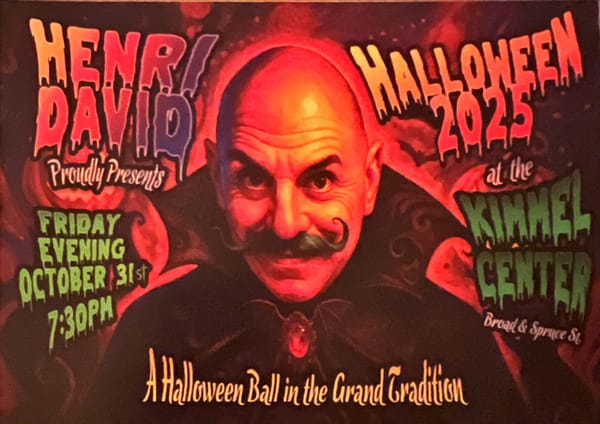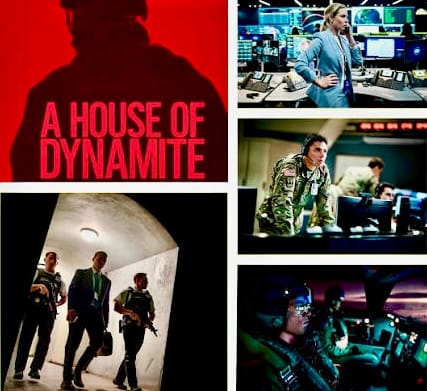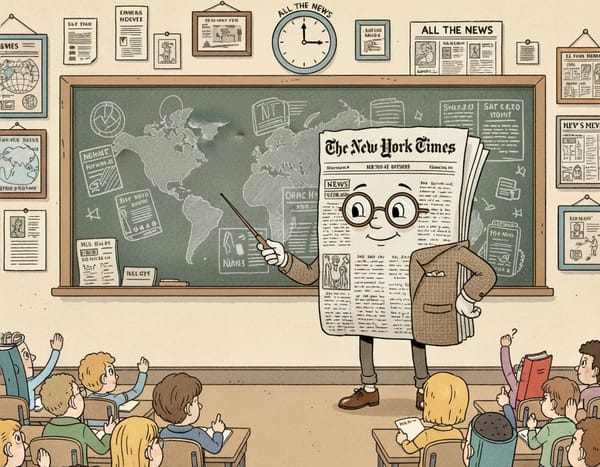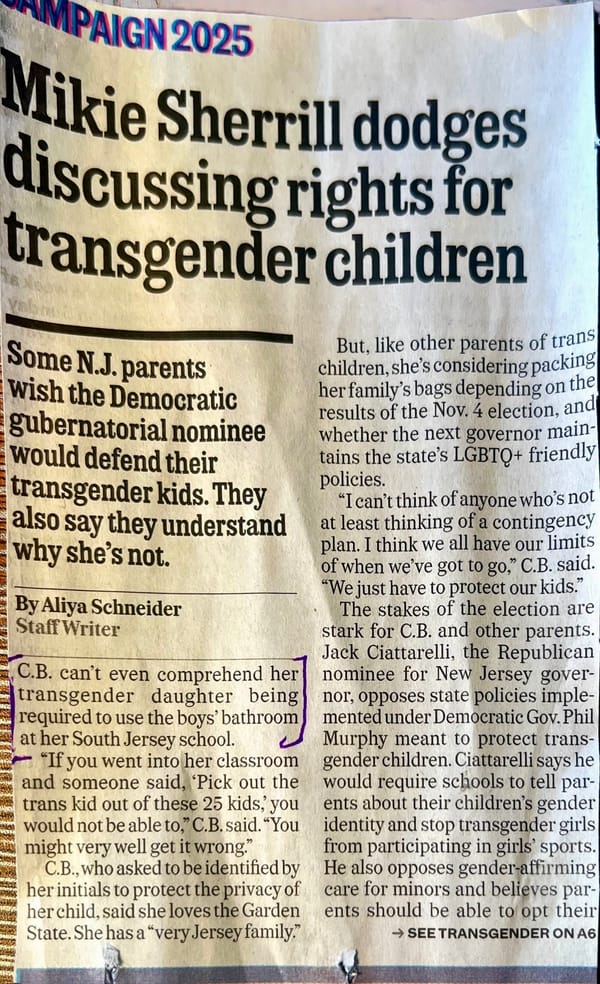Open letter to Mayor Parker on bike lanes
Dear Mayor Parker:
So how did it feel to get booed when you said you would consider the voice of residents who are actually impacted by bike lanes?
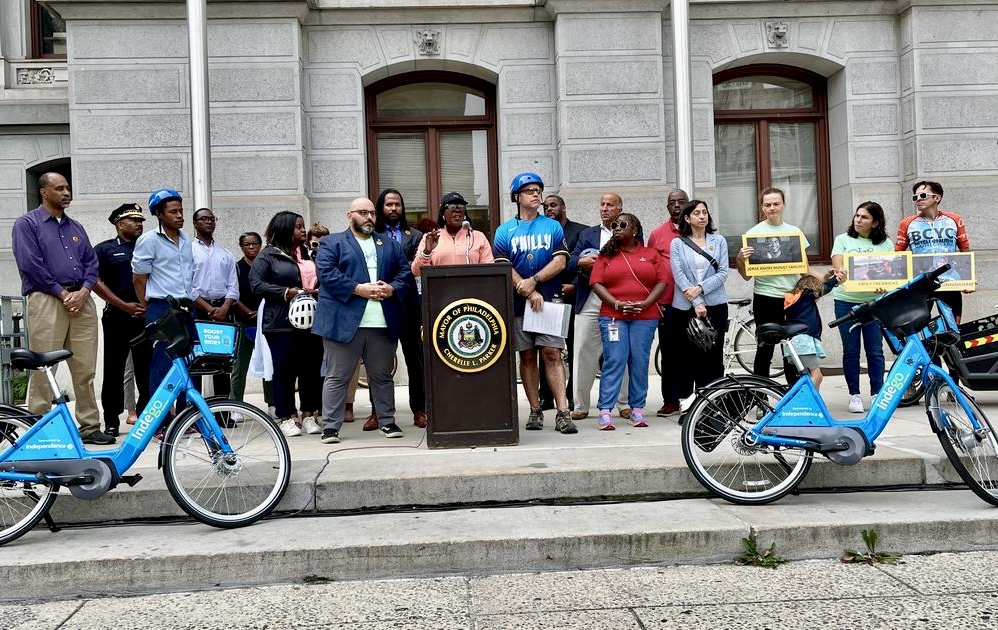
The booing came from members of the bike cult, represented by the Bicycle Coalition of Greater Philadelphia, whose clout far exceeds its membership.
They don’t feel you are friendly enough to it.
Boo-hoo. Good for you.
By its own admission, it has 2,400 members. Greater Philadelphia has 5 million residents. The numbers show the Coalition, which skillfully has wormed its way into the civic infrastructure, actually represents so few it amounts to a margin of error.
There are more left-handed Albanians in Greater Philadelphia than members of the Coalition.
(Here’s proof: There are 32,000 Albanians in Greater Philadelphia. 10% of people are left-handed. That means 3,200 Albanians are left-handed, one-third more numerous than Coalition members. Sometimes math is fun.)
Following a recent press conference, you took a friendly bike ride. Good for you. I’ve used Indego bikes, too.
But you won’t be commuting from your Mount Airy home to City Hall by bike. The distance of the average bike commute in Philadelphia I’ve read is 4 miles, but I could not find that stat. I did find one for West Philly, and that is 2.5 miles. In other words, walking distance.
The deference given to the Coalition is amazing. Is it because it can turn out 300 noisy people for a protest rally? That’s a small number, and it doesn’t make the Coalition right.
Let’s look at some other numbers — the percentage of Philadelphians who are bike commuters.
That’s 2%, according to the Coalition itself.
A lousy 2%, and remember when bike lanes were installed more than a decade ago, the city in 2010 projected 6% of Philadelphians would commute by bike by 2020. The mayor was Michael Nutter, who got bullied into this pie-in-the-sky nonsense by the Coalition, which exists solely for the good of cyclists, and no one else.
The numbers never got to 3%, let alone 6%. (And one gets counted as a bike “commuter” if a bike is used only three days a week. That should be called “part-time commuting.”)
Commuter numbers hover around 2%, even as more bike lanes are added, almost always without the approval of the neighbors who are inconvenienced by them. The Coalition’s mantra is, if you build it, they will come. It is a proven fallacy. They don’t come.
And yet the bike cult always wants more, now sadly using the tragic death of a female bicyclist to a drunk driver on Spruce Street to push their desire for concrete poles to protect bicyclists.
The cult presented you with a petition with 6,000 names, in a city of 1.5 million, and 5 million in the metro area, including left-handed Albanians.
Are concrete bollards enough? In the past I suggested a moat, perhaps with alligators.
Almost all crashes occur at intersections. This mid-block death was a real rarity.
The Coalition want bollards up and down Pine and Spruce as a safety precaution against something that almost never happens, while they will make residents of Pine and Spruce miserable all the time.
The bollards will prevent them from pulling their cars, cabs, or Ubers safely to the curb. Vehicles will have to stop in the single operating lane, delaying traffic. Bollards create barriers to deliveries as more and more Philadelphians shop by mail and FedEx, UPS, and USPS trucks are everywhere.
The longer a trip takes, the longer a car is on the road, the more fuel it burns, thus increasing air pollution. The bike lanes on broad streets like JFK and Market can be tolerated, but not on narrow streets like Pine and Spruce, where I live, and where I daily see the consequences of poor policy.
A quick word about the “experts” who tell you differently. The “experts” installed bike lanes on the right side of Pine and Spruce, only to reverse themselves in 2019. Why? Because they were wrong. They even forgot to account for left- or right-turn lanes for cars so they would not further delay traffic. Turn lanes were added later. These are facts.
Here’s another: Who did the original bike survey, prior to bike lanes? The city? No. The survey was conducted by the Coalition. In what universe does someone trust an advocate to produce unbiased statistics? It’s unbelievable — like letting a vegan order food for the company picnic.
Here are more unpleasant facts.
Bicycle riding is an assumed risk.
Bike riding is more dangerous than motorcycle riding which is more dangerous than cars, which are more dangerous than trains which are more dangerous than airplanes. Risk is a part of life.
One of the cult, Michael McGettigan, a self-interested friend of mine who owns a Center City West bicycle shop, told you: “No more studies. Let’s have some concrete. . . Let’s stop asking motorists if they’re feelings are hurt.”
Here he reveals — like most of the bike cult — a contempt for motorists, as if they were an alien life form.
In fact, motorists are people, people who pay more through their cars (for taxes, parking, insurance, license plates, gasoline, etc.) than anything contributed to society by smug bicyclists, who say they are green as if that should shield them for all criticism. They are green. So is some forms of mold. “Green” doesn’t settle the issue.
The major pushback against bike lanes comes not from motorists, but from the residents who live along the route.
Mayor Parker, ask the residents how they feel about bike lanes, most of which are virtually empty almost 24 hours a day, finding minor use during rush hours.
I’ve been writing about this issue since 2009, and have suggested we resolve our differences by having a citywide referendum on bike lanes.
Oh NO, says the Coalition, because it knows it would fail.
That’s why it furiously fought against letting District Council members have the final decision on bike lanes. That’s because almost all District Council members, if they polled residents, would vote no.
It’s not that bike riders should have no say, despite the fact that almost all break the law by blowing through red lights and disregarding stop signs. The Coalition does nothing to stop that recklessness.
Like anyone else, it should be heard, but it need not be obeyed.
We all want safety, and the most certain path to safety is through enforcement against law breakers, be they motorists, cyclists, or pedestrians.
More cops will control bad motorists, and devices like speed cameras and speed cushions will slow them down.
All good.
What we don’t need are more bike lanes. The statistics show they are a failed idea whose time has passed. And concrete bollards are an even worse idea.
